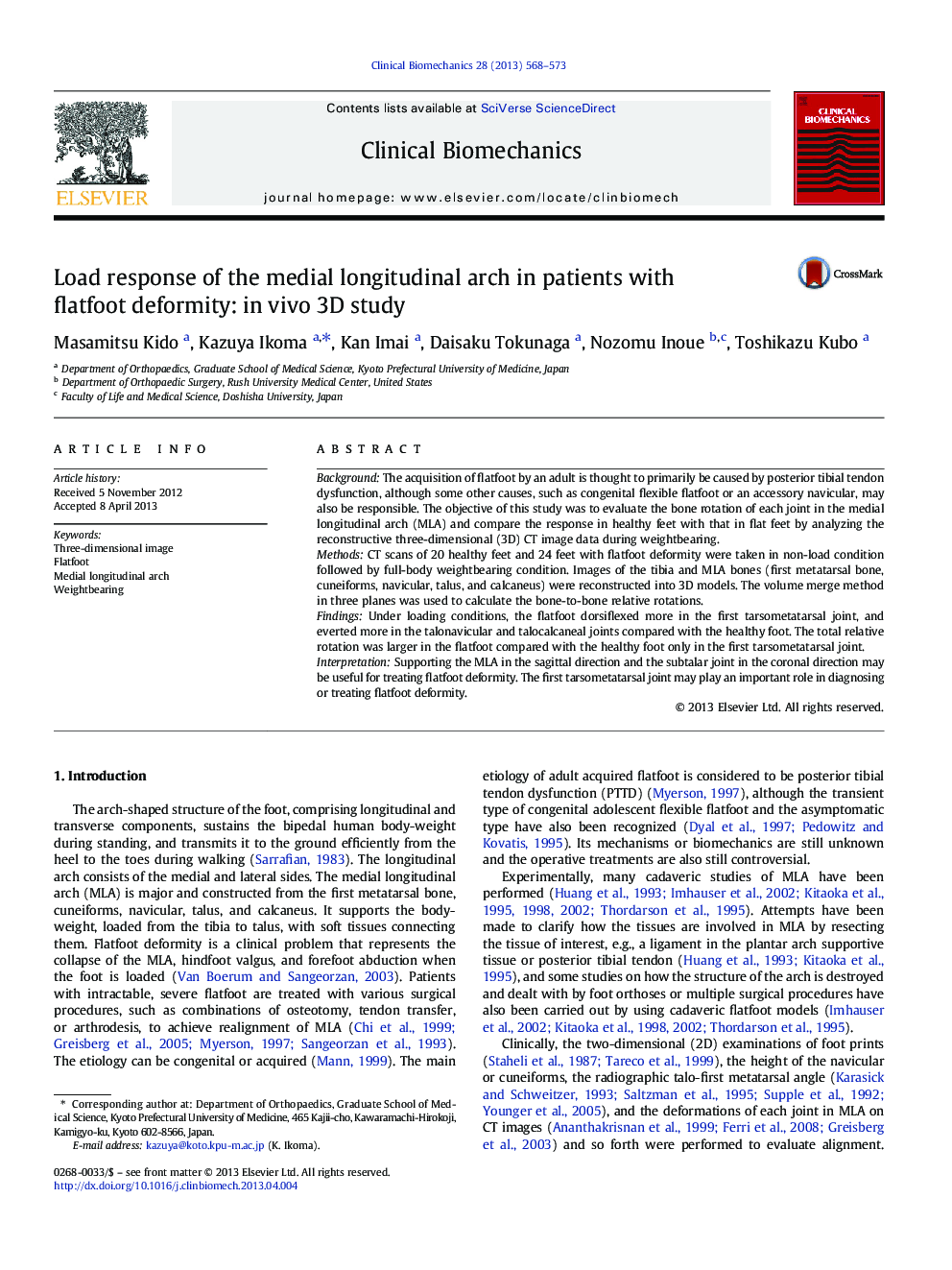| کد مقاله | کد نشریه | سال انتشار | مقاله انگلیسی | نسخه تمام متن |
|---|---|---|---|---|
| 4050706 | 1264952 | 2013 | 6 صفحه PDF | دانلود رایگان |

BackgroundThe acquisition of flatfoot by an adult is thought to primarily be caused by posterior tibial tendon dysfunction, although some other causes, such as congenital flexible flatfoot or an accessory navicular, may also be responsible. The objective of this study was to evaluate the bone rotation of each joint in the medial longitudinal arch (MLA) and compare the response in healthy feet with that in flat feet by analyzing the reconstructive three-dimensional (3D) CT image data during weightbearing.MethodsCT scans of 20 healthy feet and 24 feet with flatfoot deformity were taken in non-load condition followed by full-body weightbearing condition. Images of the tibia and MLA bones (first metatarsal bone, cuneiforms, navicular, talus, and calcaneus) were reconstructed into 3D models. The volume merge method in three planes was used to calculate the bone-to-bone relative rotations.FindingsUnder loading conditions, the flatfoot dorsiflexed more in the first tarsometatarsal joint, and everted more in the talonavicular and talocalcaneal joints compared with the healthy foot. The total relative rotation was larger in the flatfoot compared with the healthy foot only in the first tarsometatarsal joint.InterpretationSupporting the MLA in the sagittal direction and the subtalar joint in the coronal direction may be useful for treating flatfoot deformity. The first tarsometatarsal joint may play an important role in diagnosing or treating flatfoot deformity.
Journal: Clinical Biomechanics - Volume 28, Issue 5, June 2013, Pages 568–573